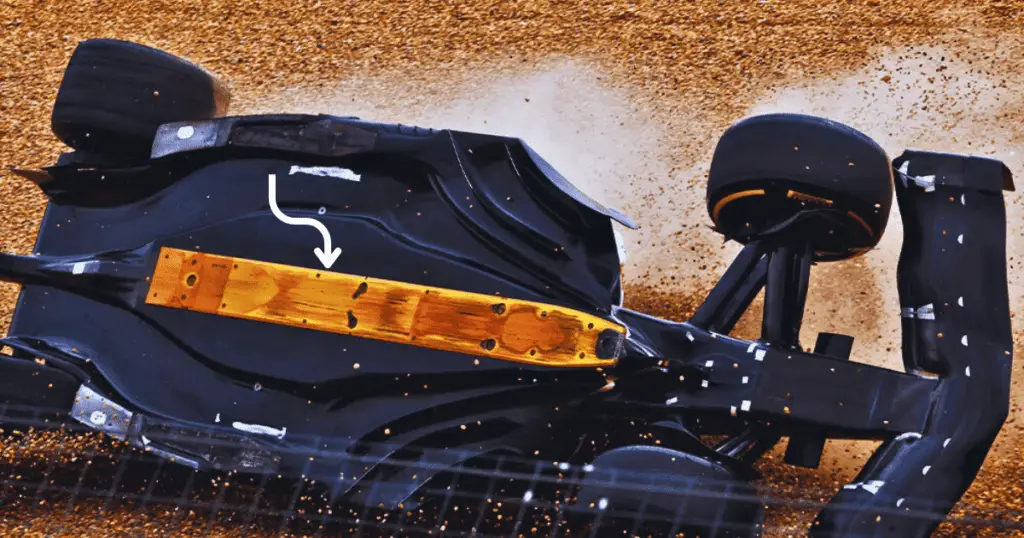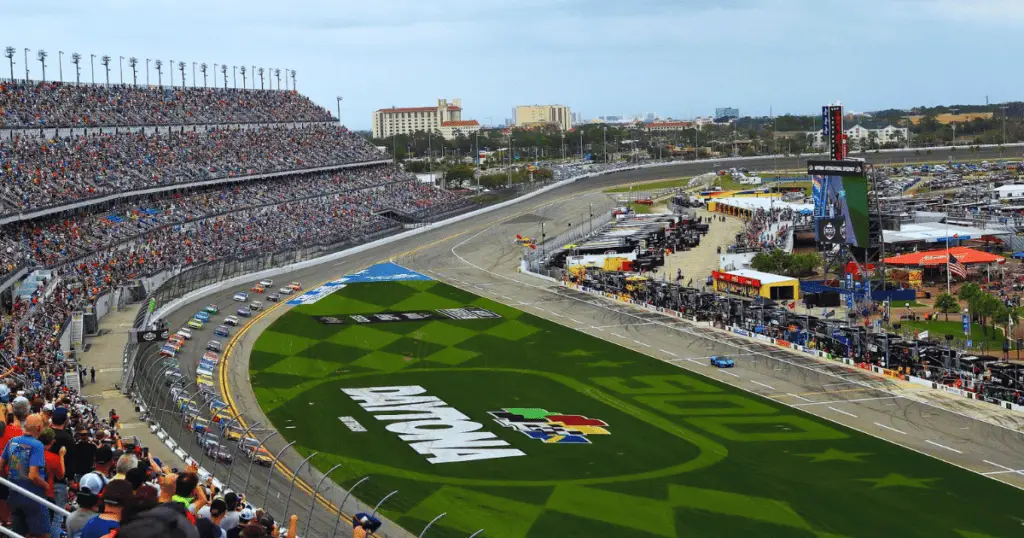Introduction
The Introduction of the wooden Post Race plank Checks, or skid block, to Formula 1 in 1994 marked a crucial component for post-race inspections mandated by the FIA. Despite the advanced technology in F1 cars, the FIA implemented these planks to regulate the minimum ground clearance of the vehicles.

Post Race Plank Checks
The skid block safeguards against teams running their cars too low. If a car’s height is too close to the ground, the wooden plank will scrape against the track surface. Each scraping event results in the shedding of a small amount of material. The FIA utilizes this characteristic to monitor potential violations. Excessive wear on the plank signals that a team may have breached the regulations by running the car at an insufficient height.
In the contemporary ground-effect era of F1, where cars generate significant downforce by being essentially sucked onto the track surface, the role of the skid block becomes even more pivotal. Teams seek advantages by running their cars close to the ground.
However, pushing the limits too far risks stalling the underfloor, leading to a sudden loss of downforce. Therefore, the FIA conducts post-race inspections, explicitly examining the wear on the plank, to ensure compliance with the regulations and maintain fair competition.
Discover the explanation behind the disqualification of Lewis Hamilton and Charles Leclerc from the US Grand Prix?

Mercedes faced criticism for impacting Lewis Hamilton’s chances of winning the United States Grand Prix due to a strategic pit decision. This led to him finishing in P2 just 2 seconds behind Max Verstappen. Despite Hamilton’s initial joy at a commendable performance, the triumph was short-lived, as both he and Charles Leclerc were later disqualified from the race.
The disqualification stemmed from their inability to pass the FIA’s post-race plank check, where both cars failed to meet the specified parameters. Consequently, Carlos Sainz secured a spot on the podium, while George Russell entered the Top 5.
Why did Lewis Hamilton and Charles Leclerc get disqualified? What was wrong with their planks?
After each race, the FIA implements a series of mandatory checks. Recognizing the impracticality of conducting tests on every single car, the FIA adopts a random selection process. Specifically, for the US Grand Prix, the FIA chose one driver from each of the Top 4 teams for inspection. Max Verstappen of Red Bull, Lewis Hamilton of Mercedes, Charles Leclerc of Ferrari, and Lando Norris of McLaren were the drivers whose cars were scrutinized.
Lewis Hamilton and Charles Leclerc faced non-compliance with the FIA-mandated plank requirements, as revealed by a breach of Article 3.5.9 in F1’s 2023 Technical Regulations. According to the regulation, the thickness of the plank assembly, measured perpendicular to the lower surface, must be 10mm [plus or minus] 0.2mm and maintain uniformity when new. Wear is acceptable to a minimum thickness of 9mm, with conformity to be verified at the peripheries of designated holes.
Following the post-race inspections of all four tested cars, it was evident that Lewis Hamilton and Charles Leclerc still needed to pass the plank test. The plank’s thickness in their respective vehicles fell below the stipulated limit of 9mm set by the FIA. In response, both Mercedes and Ferrari presented their representatives to the stewards, suggesting that external factors contributed to the wear and seeking to address the non-compliance circumstances.
Was Mercedes or Ferrari responsible for the failed plank test? Were there any external factors?
Falling short in a plank test and subsequent disqualification is uncommon—two of the four cars subjected to the test needed to meet the required standards. One can only speculate about the potential outcome if all cars underwent the examination. Considering a broader perspective, several plausible reasons could account for the plank wearing beyond the regulated limit.
Both teams immediately attributed their plank test failures to the Sprint format. With only one hour of practice before cars are locked in the Parc Ferme, teams face challenges running their vehicles with heavy fuel, making race-oriented setup adjustments difficult. Additionally, introducing a new Mercedes floor at the US Grand Prix raised suspicions that it could have contributed to the plank test discrepancies.
However, considering that Ferrari did not introduce any floor upgrades, the reasons behind the plank test failures appear to be external. The recent resurfacing of COTA emerged as a potential factor, as drivers voiced concerns about the bumpy nature of the track throughout the weekend. Furthermore, the toll on the plank caused by running the car over curbs, especially with the increased pace on race day, might have forced the vehicles off the track and onto the curbs, potentially damaging the plank.
Also Read: Greatest F1 Divers of all time
- James Hunt Auto Racer - March 31, 2024
- Greatest F1 Drivers of All Time - March 30, 2024
- Post Race Plank Checks - February 3, 2024


